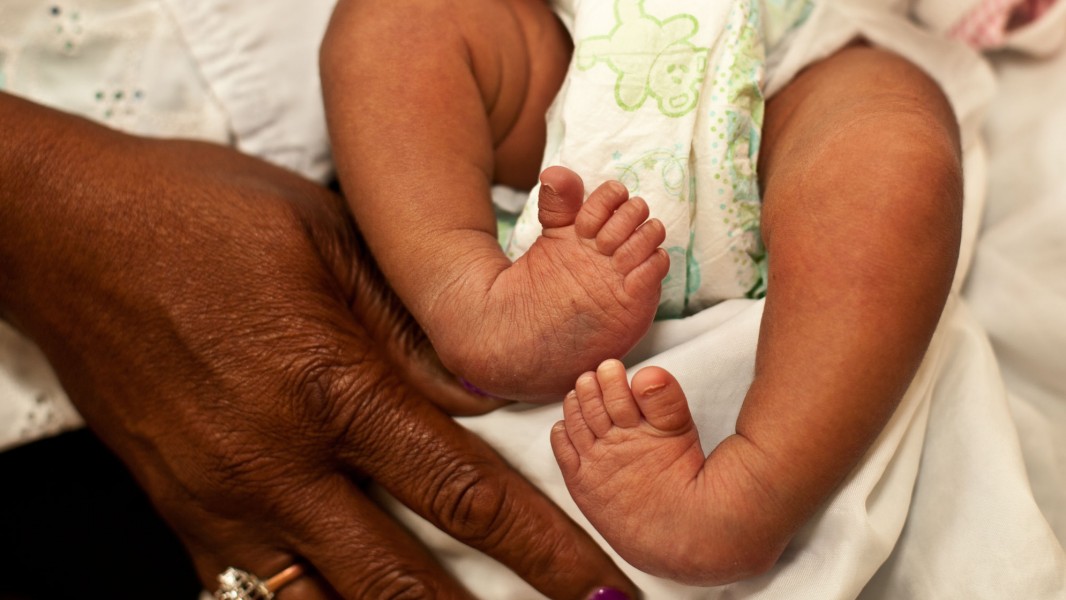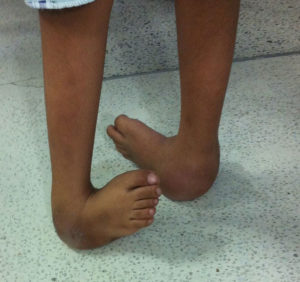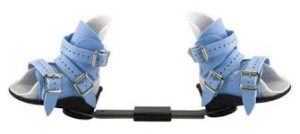
Clubbed Foot in Babies
Because of how less common clubbed foot is, it is hardly discussed and quality material on it is scarce. However, it does exists and should be discussed because it can happen to just about anybody.
Clubbed foot is the bending of a baby’s feet to an angle, usually inwards, or backwards. Most individuals with clubbed feet are born with it. The situation makes the leg look like the lower end of a golf club, hence the name.
It can affect one foot or both and is not a hereditary or transmissible disease. Many babies with clubbed foot are from parents who dont have it. And many parents with it bear children who do not have it. However, chances that you would have a clubbed foot baby does exist if you or your partner has it or had it, or either of you has a sibling or parent who had it.

Its more genetically induced (and because genetic mutations can run in families), its best to know when the possibility exists and so its adviceable to begin treatment the moment the child is born using a variety of procedures and methods which should commence immediately it is noticed, or more appropriately, immediately its diagnosed. This is because treating it as a child is inexpensive, less painful and less complicated. The bones are more easily manipulated. Whereas, as the child grows, walking may become harder and sometimes impossible leading to crawling adults.
Ponseti Method for treating clubbed feet is perhaps the most successful. This method even records more success than surgery.
The bones, muscles and tendons of newborns bend and stretch very easily, so your doctor is able to, by hand twist the clubfoot in the right direction to help correct the problem. They gradually move the foot into a position that’s closer/nearer to where it should be one step at a time. Then, they put on a cast to hold it in place. Its important not to try to send it to the “right” position at first try. Step by step each time.

After some days, about a week or two weeks later, the doctor, or more appropriately, your pediatric physiotherapist removes the cast. He gently stretches the baby’s foot some more, puts it in a new position that is closer to what it should be, and puts on a new cast. He’ll continue like this for several weeks or months.
After the foot is corrected, the child needs to wear special boots attached to a brace to hold the foot, or feet, in the best position. This is to prevent relapse. For 2 to 3 months, the boots are worn 23 hours a day. After this, they are only worn at night and during daytime naps, until the age of around 4 years because while asleep, there is is tendency for the legs to be misshaped involuntarily. For this method (Ponseti method) to be effective, it has to be done very early on, and parents have to make sure the boots are worn according to instructions.

The reason why clubbed foot appears to be prevalent in Africa, and Nigeria as well are varied. Many healthcare practitioners cant identify it especially those in rural areas. Some midwives cant treat it and dont know it should be addressed urgently. The longer you wait before beginning to address it, the more difficult it is to get it permanently resolved. Another reason is the spiritual angle there is to it. This can be that we prefer to believe in prayers, or worse still, ascribing children who have it to be cursed from birth, whereas its a birth defect that is absolutely treatable.
Enjoy bonding with your child.
